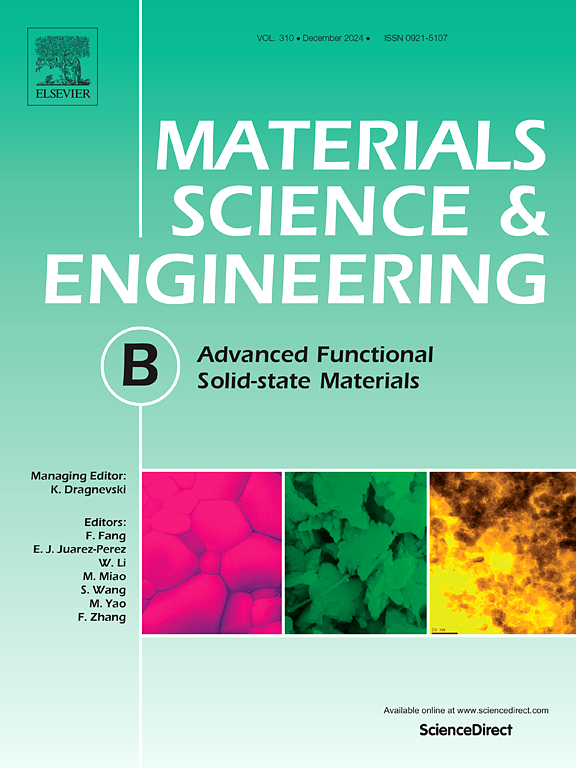ZnMn2O4 hierarchical hollow Self-Assembly microspheres Bearing enhanced photocatalytic activity under visible light
IF 3.9
3区 材料科学
Q2 MATERIALS SCIENCE, MULTIDISCIPLINARY
引用次数: 0
Abstract
This study presents the successful synthesis of highly hierarchical ZnMn2O4 microspheres (HZM) through the self-assembly of nanoparticle arrays. HZM was prepared using a one-step hydrothermal method, without the use of sacrificial agents or templates, at three different hydrothermal times (20, 40, and 72 h). Increasing the hydrothermal time to more than 20 h resulted in the formation of well-defined hierarchically hollow microspheres. Analysis confirmed the proper crystallinity and phase purity of HZM, with regular nanoparticles arranged on their surface in a stacked configuration resembling a hedgehog shape. The photocatalytic characteristics of HZM were assessed through an investigation into the degradation of methylene blue (MB) under visible light. Among the synthesized HZMs, those processed for a duration of 72 h (HZM3) demonstrated an enhanced specific surface area and a reduced recombination rate of photogenerated electron-hole pairs. This improvement has garnered significant attention, resulting in the most effective photocatalytic oxidation of MB (>80 %) achieved within 180 min. The comprehensive evaluation and analysis of the photocatalytic properties of the synthesized hollow microspheres were conducted. The durability and stability of HZM3 in the tricycle indicate that these as-synthesized microspheres can serve as durable photocatalysts for the degradation of organic dye molecules.

求助全文
约1分钟内获得全文
求助全文
来源期刊

Materials Science and Engineering: B
工程技术-材料科学:综合
CiteScore
5.60
自引率
2.80%
发文量
481
审稿时长
3.5 months
期刊介绍:
The journal provides an international medium for the publication of theoretical and experimental studies and reviews related to the electronic, electrochemical, ionic, magnetic, optical, and biosensing properties of solid state materials in bulk, thin film and particulate forms. Papers dealing with synthesis, processing, characterization, structure, physical properties and computational aspects of nano-crystalline, crystalline, amorphous and glassy forms of ceramics, semiconductors, layered insertion compounds, low-dimensional compounds and systems, fast-ion conductors, polymers and dielectrics are viewed as suitable for publication. Articles focused on nano-structured aspects of these advanced solid-state materials will also be considered suitable.
 求助内容:
求助内容: 应助结果提醒方式:
应助结果提醒方式:


